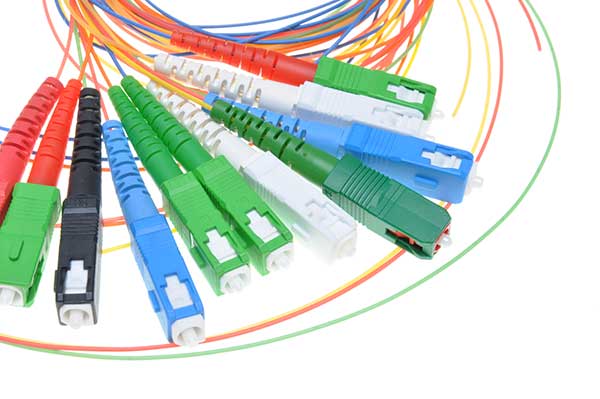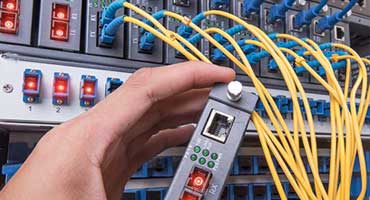Fiber optic cable is getting popular for all types of network connectivity mainly because it provides far greater bandwidth than copper and has proven performance at rates up to 10 Gbps, it gives network designers future-proofing capabilities. Let us look at the various types of Fiber Optic Cable used in the network installations in Canada. Physically, Fiber Cable broadly is categorized into 2 types:
- Indoor Fiber Cable
- Outdoor Fiber Cable
Indoor Cable is for indoor environments where weather and temperature are not a big factor. Indoor Cable comes in the following formats:
Simplex cable—contains a single fiber for one-way communication
Duplex cable—contains two fibers for two-way communication
Multifiber cable—contains more than two fibers. Fibers are usually in pairs for duplex operation. A ten-fiber cable permits five duplex circuits.
Breakout cable—typically has several individual simplex cables inside an outer jacket. The outer jacket includes a zipcord to allow easy access
Heavy-, light-, and plenum-duty and riser cable
Heavy-duty cables have thicker jackets than light-duty cable, for rougher handling.
Plenum cables are jacketed with low-smoke and fire-retardant materials.
Riser cables run vertically between floors and must be engineered to prevent fires from spreading between floors.
Outdoor Fiber Cable is suitable for harsh weather conditions and comes in the following formats:
Overhead—cables strung from telephone lines
Direct burial—cables placed directly in trenches
Indirect burial—cables placed in conduits

Apart from this, you can buy Indoor or Outdoor Fiber in following formats:
- Loose Tube
- Microduct Cable
- Ribbon
- Tight-Buffered
- Self-Supporting
- Interconnect
Type of Fiber Cable: Fiber is categorized into 2 types based on it’s make.
Multimode
Multimode cable comes with a large-diameter core and multiple routes of light. It is available in 2 core sizes: 50-micron and 62.5-micron. It is most common fiber used in day to day network connections such as within a building to connect cabinets. It is recommended for backbone, horizontal, and intrabuilding connections, and should be considered for any new construction and
installations.
single-mode
Single-mode cable has a single route of light and is very high-performance cable that is more commonly used connecting networks between buildings. Single-mode cable provides 50 times more
distance than multimode cable. Single-mode cable is traditionally yellow in color.
Looking for Fiber Cabling at business? Give us a call for free estimates.



